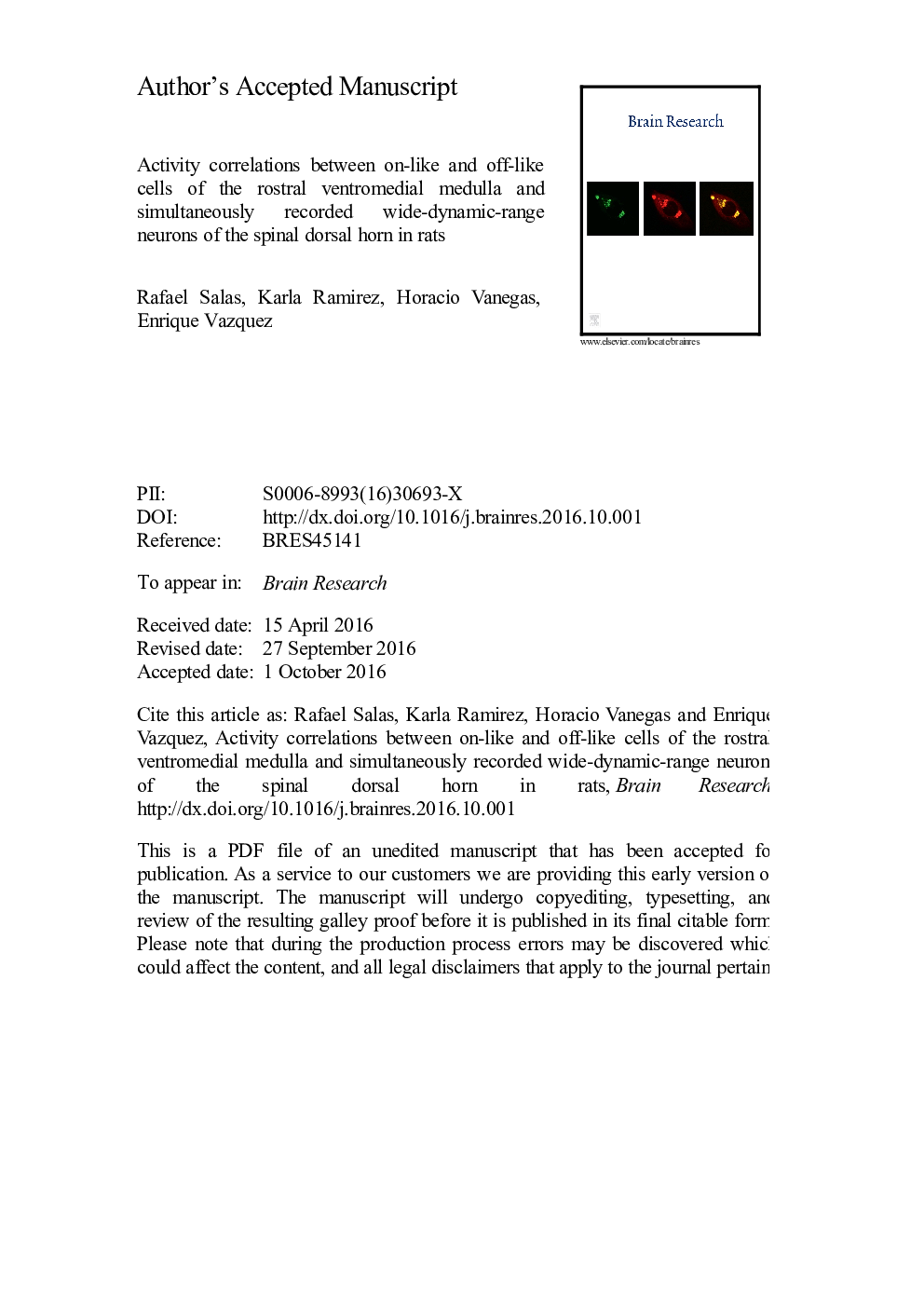| Article ID | Journal | Published Year | Pages | File Type |
|---|---|---|---|---|
| 8839990 | Brain Research | 2016 | 23 Pages |
Abstract
Considerable evidence supports the notion that on- and off-cells of the rostral ventromedial medulla (RVM) facilitate and depress, respectively, spinal nociceptive transmission. This notion stems from a covariation of on- or off-cell activities and spinal nocifensive reflexes. Such covariation could theoretically be due to their independently responding to a common source, or to an RVM-derived modulation of ventral horn neurons. Here, we tested whether on- and off-cells indeed modulate spinal nociceptive neurons. In deeply anesthetized rats, unitary recordings were simultaneously made from an RVM on-like or off-like cell and a spinal nociceptive neuron that shared a receptive field (RF) at a hind paw. Action potential firing in RVM/spinal neuron pairs was highly correlated, positively for on-like cells and negatively for off-like cells, both during ongoing activity and during application of calibrated noxious pressure to the RF. Microinjection of morphine into RVM induced a correlated decrease in on-like cell/spinal neuron ongoing activity and response to noxious stimulation. RVM morphine induced changes in off-like cell activity that were not correlated with spinal neuronal activity. These results suggest that on-cells exert a positive modulation upon spinal nociceptive neurons, upstream to ventral horn circuits and plausibly at the origin of nociceptive information that eventually reaches the cerebral cortex. On-cells may in this manner contribute to inflammation- and neuropathy-induced increases in withdrawal reflexes. Most significantly, on-cell modulation of nociceptive neurons may be a key factor in clinical pain conditions such as hyperalgesia and allodynia.
Related Topics
Life Sciences
Neuroscience
Neuroscience (General)
Authors
Rafael Salas, Karla Ramirez, Horacio Vanegas, Enrique Vazquez,
